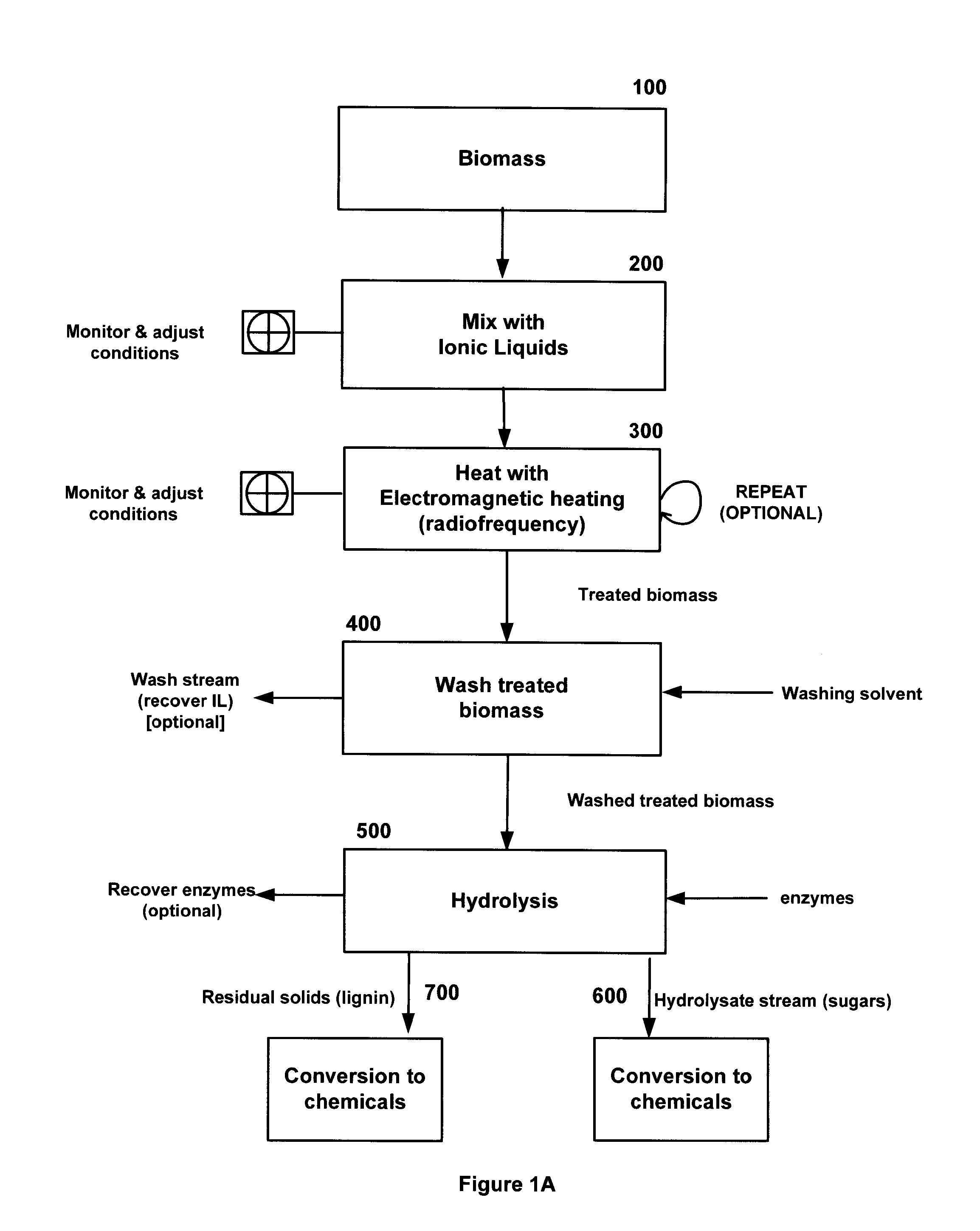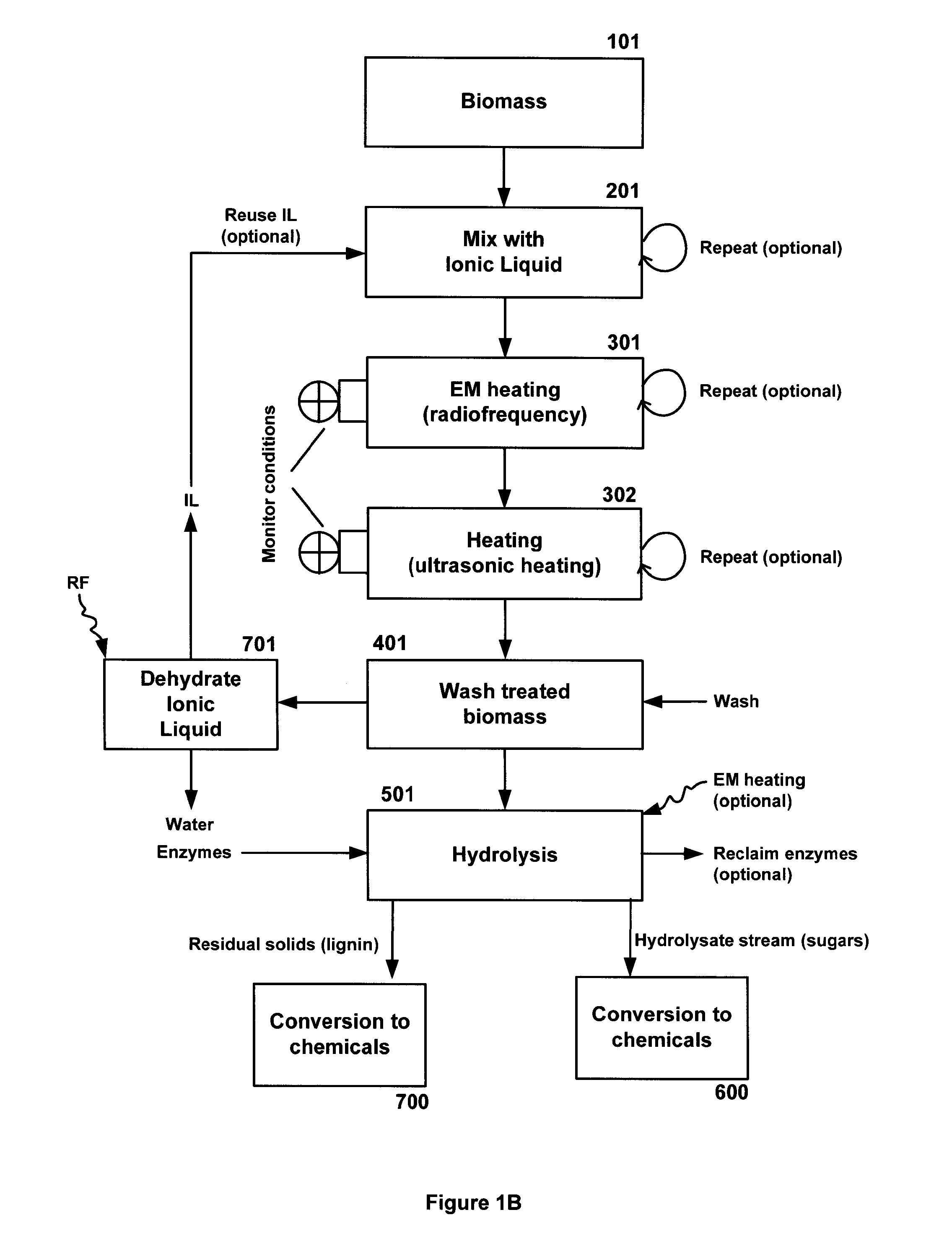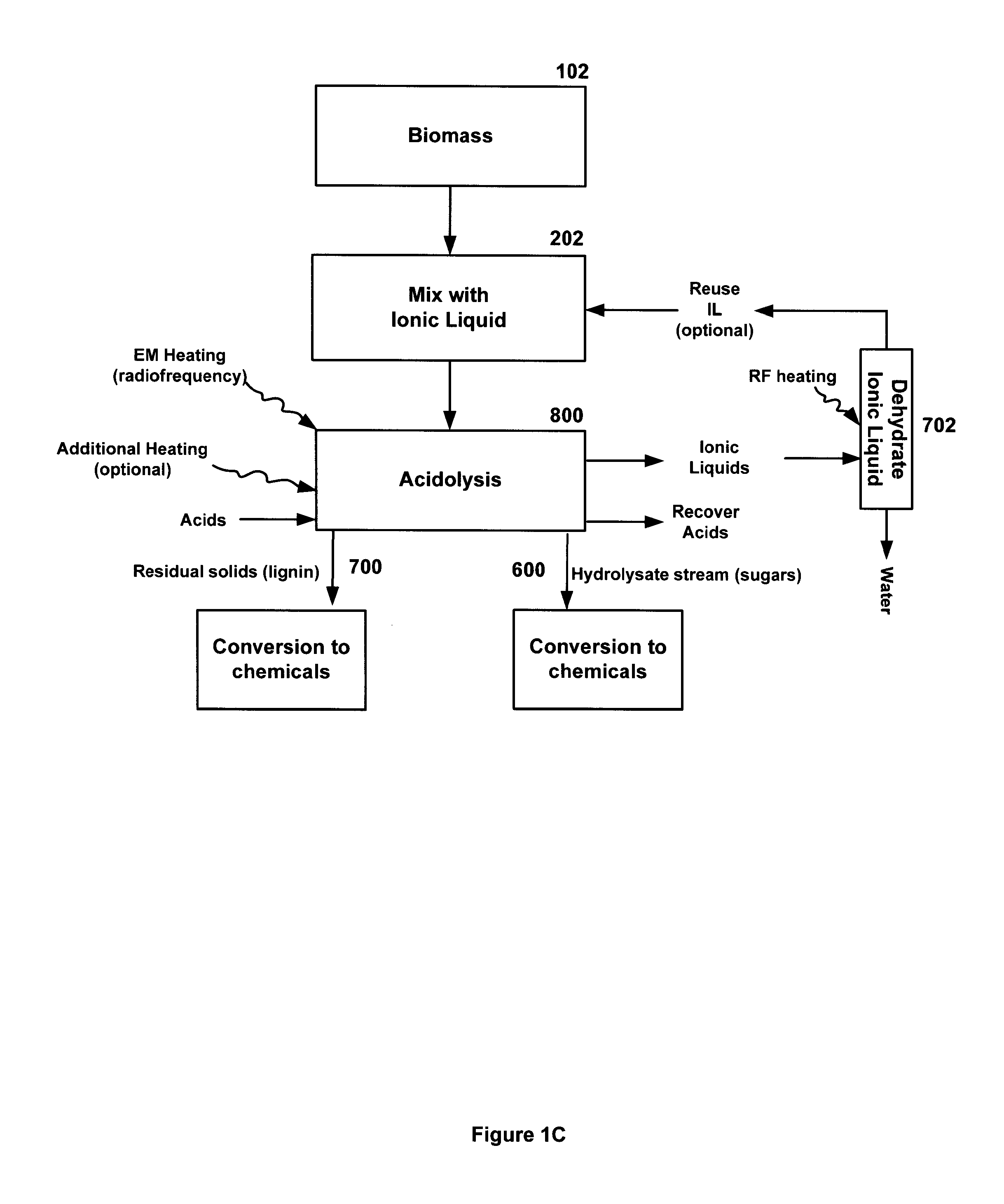Method and apparatus for treatment of biomass substrates
a biomass substrate and treatment method technology, applied in the field of biomass substrate treatment methods and apparatuses, can solve the problems of slow reaction rate of cellulose hydrolysis, inability to economically produce fuels and chemicals from biomass, and insufficient pure cellulose of biomass, etc., to achieve high solids loading, high solids loading, and effective uniform processing of biomass
- Summary
- Abstract
- Description
- Claims
- Application Information
AI Technical Summary
Benefits of technology
Problems solved by technology
Method used
Image
Examples
example 1
Method for Processing Feedstock
[0189]A method for processing biomass comprises contacting feedstock with ionic liquids to form a uniform solution (suspension) and transferring (e.g., injecting) it into a closed variable electromagnetic (EM) wave device. With the application of RF, the temperature in the biomass will be monitored and the RF frequency will be varied to adjust for achieving uniform temperature distribution within the RF device biomass processing unit.
[0190]The biomass treating method disclosed herein heat the biomass / products with ions which gets heated due to dipole movement because of RF application (e.g., 27 MHz) continuously. This generates rapid uniform volumetric heating within the entire product due to frictional interaction between the molecules due to dipole heating of ions. Although identical to the microwave in terms of its heating characteristics, radio frequency has the added advantage of uniform, and most important of all, high penetration Depth that coul...
PUM
| Property | Measurement | Unit |
|---|---|---|
| Temperature | aaaaa | aaaaa |
| Temperature | aaaaa | aaaaa |
| Temperature | aaaaa | aaaaa |
Abstract
Description
Claims
Application Information
 Login to View More
Login to View More - R&D
- Intellectual Property
- Life Sciences
- Materials
- Tech Scout
- Unparalleled Data Quality
- Higher Quality Content
- 60% Fewer Hallucinations
Browse by: Latest US Patents, China's latest patents, Technical Efficacy Thesaurus, Application Domain, Technology Topic, Popular Technical Reports.
© 2025 PatSnap. All rights reserved.Legal|Privacy policy|Modern Slavery Act Transparency Statement|Sitemap|About US| Contact US: help@patsnap.com



